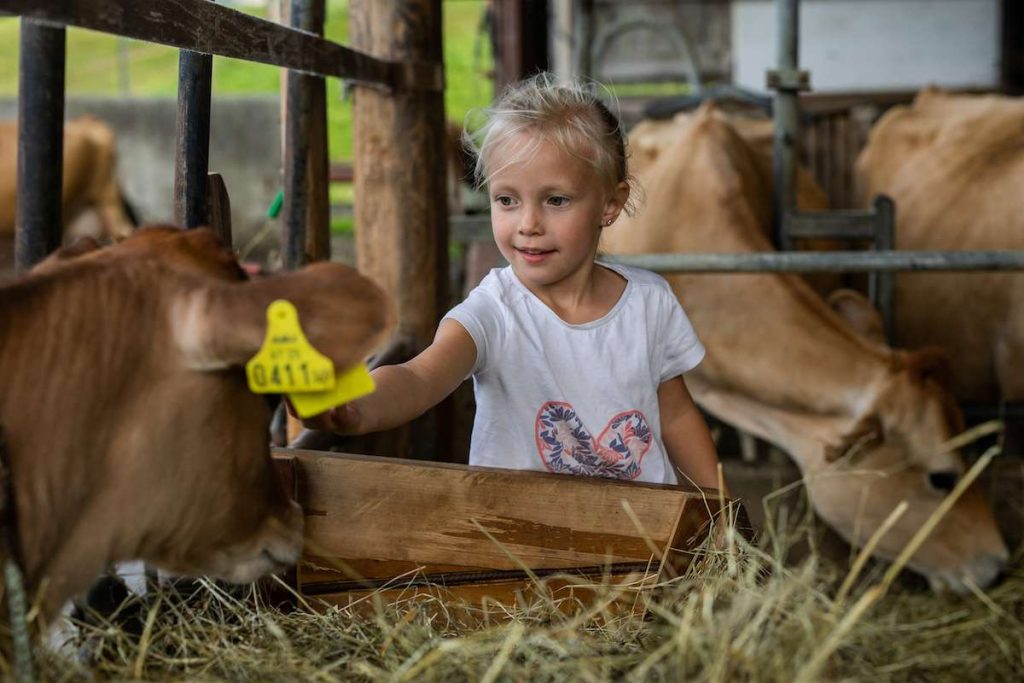The microbiome is currently a hot topic in both the scientific community and the mainstream media. Specifically as regards asthma, the accumulating evidence indicates that the environmental microbiome plays a significant role in asthma development. The very low prevalence of asthma in populations highly exposed to the microbiome indicates its potential for disease prevention. These protective effects are most likely related to the specific microbial diversity in farming environments, especially those that practise animal husbandry.
The human microbiome is defined as the collection of all microorganisms including bacteria, archaea and fungi living in and on the human body. The microbiome seems to affect virtually every bodily function. Depending on its composition, it can produce thousands of different biologically active substances, including neurotransmitters such as dopamine, serotonin and norepinephrine. According to the current state of science, the diversity of the microbiome seems to play the biggest role in human health. It is becoming increasingly apparent that the composition of the intestinal microbiome beginning in utero has long-term consequences for human health and well-being. It is therefore extremely important for the maintenance of health to permit the human microbiome to have regular exchanges with microbes from the environment. However, increasing urbanization and changing habits, e.g. more sedentary lifestyles, reduce the spectrum of microorganisms that people are exposed to: Studies show for example that those living in densely populated areas are less susceptible to microbial diversity than those in rural neighbourhoods, which also reduces the diversity of the human microbiome. There is emerging evidence that biodiversity loss in the wider environment may lead to reduced diversity in human microbiota and such modifications are associated with a dramatic increase in the incidence of immune-related diseases including metabolic, allergic and inflammatory diseases and, most likely, neurodegenerative and psychiatric disorders as well.
Medical evidence:
Asthma and allergies are today the most common chronic diseases in children and the leading causes of school absences, chronic medication usage, emergency department visits and hospitalizations. There is strong evidence that the development of allergic sensitization can be influenced by environmental co-factors. A large body of literature shows that children raised on farms have much lower rates of allergies and asthma. One key reason might be that youngsters breathe in air full of molecules from the cell wall of certain bacteria, called lipopolysaccharides for their fat-sugar structure. Also known as endotoxins, these fragments – from dying bacteria in cow manure and fodder – cause a temporary low state of inflammation in the lungs that somehow dampens the immune system’s response to allergens.
The timing of the exposure to environmental microbes found on farms seems to be crucial. The strongest effects are observed for exposure that occurs in utero and during the first years of life. This implies a variety of options for future preventive strategies in terms of health tourism.
Studies of medical evidence:
- Resource: agricultural environment with increased exposure to bacterial components in stables as well as livestock. Indication: hay fever, asthma and eczema (Von Ehrenstein et al., 2000): evidence level III
- Resource: microbial agents in stables and farms. Indication: hay fever, asthma and other common allergies. (Riedler, Eder, Obergeld & Schreuer, 2000): evidence level III
- Resource: diversity of microbial exposure. Indication: asthma and atopy (Ege et al., 2011): evidence level III
- Resource: agricultural environment. Indication: asthma and other atopic illnesses (Alfvén et al., 2006): evidence level III
- Resource: agricultural environment. Indication: allergies (Horak et al., 2002): evidence level IIb
- Resource: agricultural environment. Indication: allergies and asthma (Schulze, Strien, Praml, Nowak & Radon, 2007): evidence level III
- Resource: agricultural environment, visiting stables. Indication: asthma, allergies and other atopic diseases. (Radon, Ehrenstein, Praml & Nowak, 2004): evidence level III
- Resource: agricultural environment, exposure to stables holding livestock. Indication: asthma, allergies and other atopic diseases (Riedler et al., 2001): evidence level III
- Resource: farmstays for pregnant women. Indication: asthma, allergies (Ege et al., 2006): evidence level III

Health tourism potential:
- Cooperation between farmers and hosts in the region.
Focus for farmstay holidays on working in stables and with animals. Holiday offers for pregnant women and/or for families with children in the first year of life for the prevention of allergies and asthma.
Download a PDF:
Enter your E-Mail address, and get a pdf to review later.